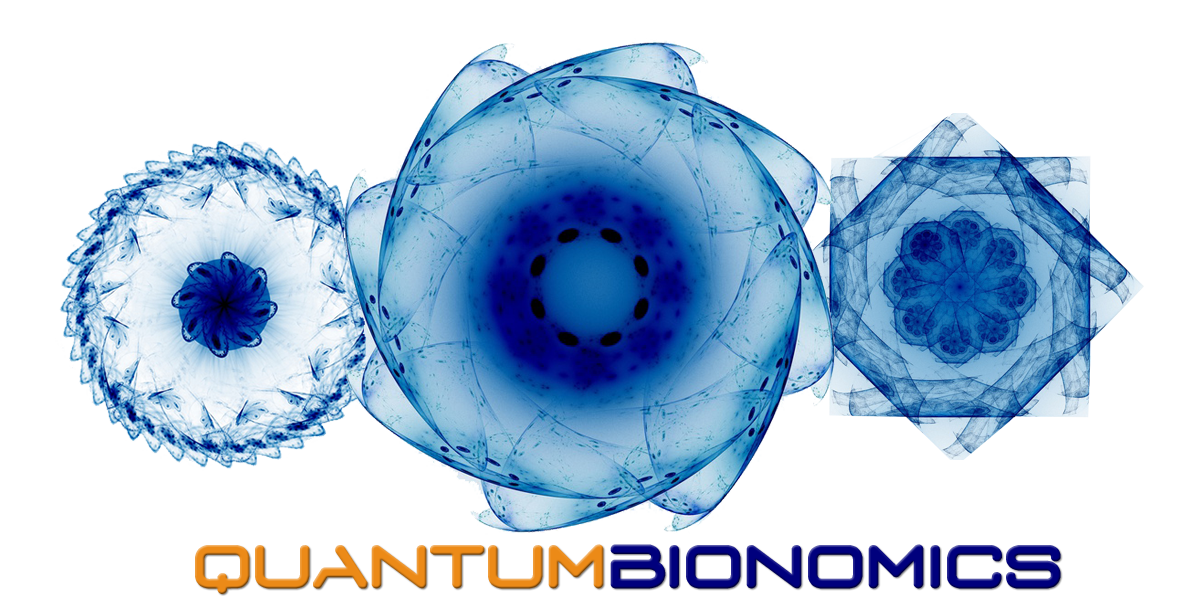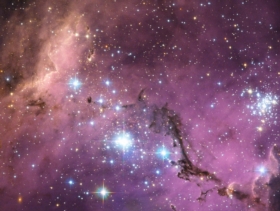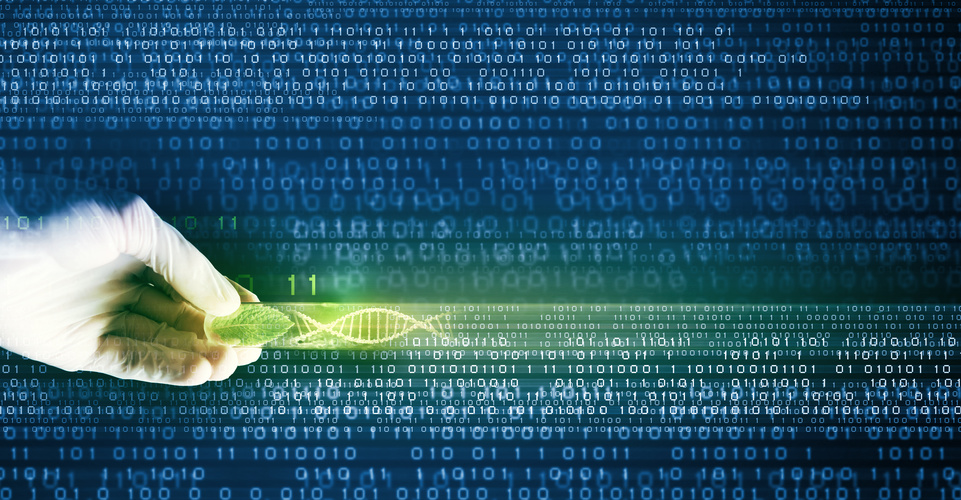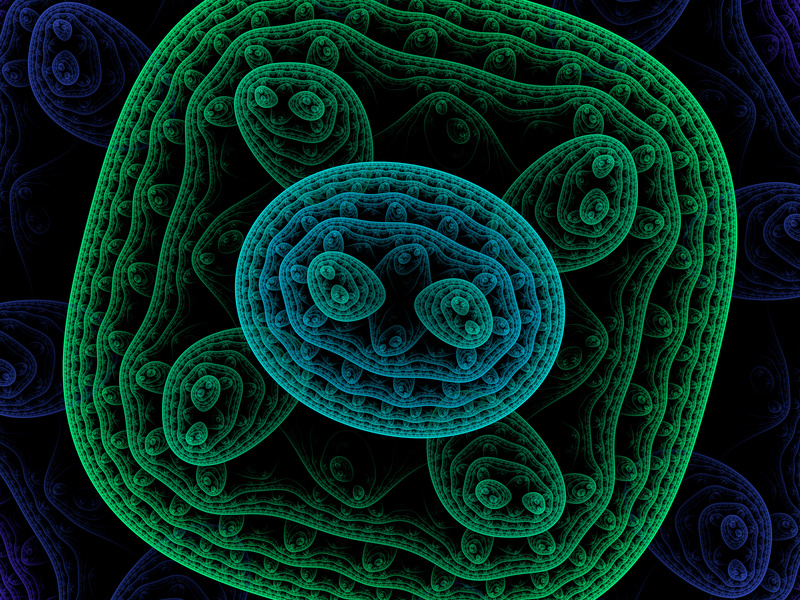A new measurement of how fast space is expanding disagrees with estimates based on the early universe, potentially pointing toward a break from the standard model of physics
Our universe is flying apart, with galaxies moving away from each other faster each moment than they were the moment before. Scientists have known about this acceleration since the late 1990s, but whatever is causing it—dubbed dark energy—remains a mystery. Now the latest measurement of how fast the cosmos is growing thickens the plot further: The universe appears to be ballooning more quickly than it should be, even after accounting for the accelerating expansion caused by dark energy.
Scientists came to this conclusion after comparing their new measurement of the cosmic expansion rate, called the Hubble constant, to predictions of what the Hubble constant should be based on evidence from the early universe. The puzzling conflict—which was hinted at in earlier data and confirmed in the new calculation—means that either one or both of the measurements are flawed, or that dark energy or some other aspect of nature acts differently than we think.
“The bottom line is that the universe looks like it’s expanding about eight percent faster than you would have expected based on how it looked in its youth and how we expect it to evolve,” says study leader Adam Riess of the Space Telescope Science Institute in Baltimore, Md. “We have to take this pretty darn seriously.” He and his colleagues described their findings, based on observations from the Hubble Space Telescope, in a paper submitted last week to the Astrophysical Journal and posted on the preprint server arXiv.
A dark energy wrinkle
One of the most exciting possibilities is that dark energy is even stranger than the leading theory suggests. Most observations support the idea that dark energy behaves like a “cosmological constant,” a term Albert Einstein inserted into his equations of general relativity and later removed. This kind of dark energy would arise from empty space, which, according to quantum mechanics, is not empty at all, but rather filled with pairs of “virtual” particles and antiparticles that constantly pop in and out of existence. These virtual particles would carry energy, which in turn might exert a kind of negative gravity that pushes everything in the universe outward.
The Hubble constant discrepancy, though, suggests that dark energy might actually change over space and time, potentially causing an increasing acceleration of the cosmos instead of a constant outward force. One theory proposing this type of dark energy is called quintessence, which posits that dark energy results not from the vacuum of space but from a field that pervades spacetime and can take on different values at different points.
An alternative explanation for the discrepancy, however, is that the universe contains an additional fundamental particle beyond the ones we know about. In particular, a new species of neutrino—a nearly massless particle that comes in three known varieties so far—could account for the divergence in Hubble constant measurements. If an extra type of neutrino exists, then more of the universe’s total energy would take the form of radiation rather than matter. (Neutrinos, because they have almost no mass, travel near light speed and therefore count as radiation in this calculation). Whereas matter clumps together under gravity, a greater radiation budget would have allowed the universe to expand faster than it would have otherwise.
And these ideas are just two of the possible implications of the measurements. Another option, for example, is that the universe is not flat, as thought, but slightly curved. Theorists are excitedly pursuing all these notions and more, but the scientists working on the experiments say they must first try to find flaws in their measurements that could account for the divergence. “Basically is there something going on in cosmology that we don’t understand, or is there something going on with the data?” says Charles Bennett of Johns Hopkins University, who has worked on measurements of the Hubble constant from the early universe and was not involved in the latest study. “One of those is lot more exciting, but I think the other may be more likely.”
Distance ladders
Riess and his team calculated how fast the universe is growing by comparing the distances to various galaxies with their redshifts—a measure of how much the wavelength of their light has been stretched by the expansion of the universe. Calculating the distances was a tricky feat requiring a technique the researchers call “building a distance ladder.” First they used trusted methods to measure the distances to close galaxies, then used those distances to calibrate measurements of variable stars within the galaxies. These stars, called Cepheids, brighten and dim periodically, allowing them to serve as cosmic yardsticks. Finally, the researchers used Cepheids—which are only visible relatively nearby—to calibrate measurements of a special class of supernova explosions called Type 1a, which erupt with a known brightness that allows astronomers to infer their distances. Once they had reliable measurements of the nearby supernovae, they could compare them with farther supernovae of the same type to get very accurate readings of their distances.
This is essentially the same technique Riess and colleagues used in the 1990s to discover the first evidence that the universe’s expansion was accelerating—a finding that later won him and two others the Nobel Prize in physics. In 2011 the team made an updated measurement of the Hubble constant based on eight galaxies containing both Cepheids and Type 1a supernovae, but the new paper added 10 more. “For each one of those 10 galaxies, we observed them about 12 different times over a span of about 100 days,” says Samantha L. Hoffmann of Texas A&M University, who analyzed much of the data. “It was quite an undertaking.” The newest measurement puts the universe’s expansion rate at 73.02, plus or minus 1.79, kilometers per second per megaparsec (about 3 million light-years), meaning that for each megaparsec you go out, space is receding about 73 kilometers a second faster.
Looking back in time
The Hubble constant measurement from the early universe, on the other hand, comes from observations of the cosmic microwave background (CMB)—light that is left over from the big bang and pervades the entire sky. Researchers studied patterns in the CMB and extrapolated to modern times, based on the best known cosmological laws, to arrive at the Hubble constant. The best observations to date of the CMB were made by the European Space Agency’s Planck satellite, whose data puts the universe’s expansion rate at 67.3, plus or minus 0.7, kilometers per second per megaparsec.
“Before, there were these hints of tension in the two measurements,” says Dan Scolnic of the University of Chicago, a member of Riess’ team. “Now both our team and the Planck team have reanalyzed and those hints have become something stronger. We have this alarm bell that there really could be something more going on. This may be the biggest tension now in cosmology.”
The latest result is also in good agreement with other measurements of the Hubble constant based on similar distance ladder measurements, such as a 2012 study led by Wendy Freedman of the University of Chicago. “I think it’s interesting that they’ve increased their sample size and the result is essentially unchanged,” Freedman says. “This is spectacular progress to be at this point, but actually making a definitive measurement at this level requires independent methods. How this will ultimately resolve is really too early to say.” Freedman is leading an effort to perform the same calculation using another type of cosmic yardstick—RR Lyrae variable stars—in place of Cepheids.
On the CMB side as well, scientists continue to analyze the data and look for explanations of what might have gone wrong. Bennett, who led a CMB mapping mission before the Planck experiment called the Wilkinson Microwave Anisotropy Probe (WMAP), says that there are also discrepancies within the CMB data, for instance between what the satellites measure by looking at the sky on small scales versus larger ones. “Before I jump to conclusions about cosmology I’d like to understand these things first,” he says. Overall, he is thrilled with the progress.
“We went through years and years where we didn’t know the value of the Hubble constant to a factor of two, and now we’re talking about getting it within two percent,” he adds. “These things we’re comparing have a fine accuracy and that’s a testament to a lot of people in the field. The message here is that it’s not over. We need to keep driving forward.Source: Cosmic Speed Measurement Suggests Dark Energy Mystery – Scientific American












Leave A Reply